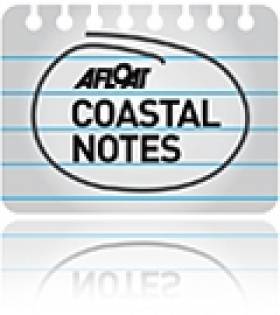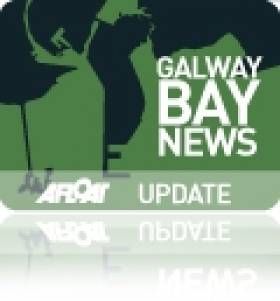Displaying items by tag: coastal heritage
Coastal Heritage Sites Drew Record Numbers Last Year - OPW
Coastal heritage sites such as Inis Mór’s Dún Aonghasa and Kerry’s Blasket Centre have recorded significant increases in visitor numbers, the Office of Public Works (OPW) says.
Dún Aonghasa on Inis Mór- which was the winner of the European film location award last year - recorded an increase of 20%, it says.
The Céide Fields, Co Mayo, which received a €2.6m state investment in 2022 for its new visitor centre recorded a 38% increase in 2023 on the previous year.
Ionad an Bhlascaoid – the Blasket Centre, Co Kerry - saw a 58% increase in visitors last year, the OPW says.
This compares to a 29% increase in visitors to Clonmacnoise, Co Offaly, and a 13% increase in visitors at Dublin’s Farmleigh House.
The OPW says 2023 was another successful year for visitor numbers at the 780 important State heritage sites.
The number of recorded visitors last year exceeded 15.3 million, up from 15 million in 2022, it says.
Minister of State for the OPW Patrick O’Donovan said that Ireland is “fortunate to have such a rich and diverse collection of landmarks across the country”.
“The continued investment by the State in our heritage portfolio- from ancient monuments to medieval castles- is so important for the safeguarding and preservation of our built heritage,”he said.
“ It is wonderful to see the continued upward trend in visitor numbers to both the paid attractions and the recreational spaces which the public can access for free, all year round,”he said.
'Rescue' Needed For Sensitive Sites After Storm Rachel Coastal Damage
#StormRachel - Ireland needs a dedicated 'rescue unit' to protect sensitive heritage sites around the coast from severe weather, as news of damage to some vulnerable spots emerges.
Michael Gibbons, an archaeologist from Connemara, told The Irish Times that while the high winds whipped up by the likes of last week's Storm Rachel have helped uncover new archaeological finds, there is as yet no procedure for protecting such finds from further weathering and erosion.
Gibbons commented specifically on the midden deposits uncovered in Roundstone on Galway Bay, which were hit by strong gales and exposed the vulnerable dunes in the area to further destruction.
The Irish Times has more on the story HERE.
New Evidence Suggests Galway Bay Only 3,700 Years Old
#GalwayBay - Carbon dating on a fragment of an ancient oak trackway on the northern shore of Galway Bay suggests a much more recent beginning for the bay as we know it.
According to The Irish Times, the radiocarbon dating analysis pinpoints the oak sample to around 1,700 BC, which means the sea level in the region was still rising as early as 3,700 years ago – nearly 4,000 years after submerging the 'drowned forests' discovered west of Spiddal earlier this year.
A full survey of the site will be undertaken by the National Museum of Ireland but it's already believed that the trackway or platform, which may have been ceremonial in nature, was built upon what was then freshwater bogland before the rising sea waters encroached.
The Irish Times has more on the story HERE.
New Irish Language TV Series Unlocks Secrets of Ireland's Marine Environment
Ireland’s unexplored 220-million-acre marine environment will be revealed in a landmark new TV series which began last week.
As previously reported on Afloat.ie, Farraigí na hÉireann (Seas of Ireland) is a new six-part Irish-language series on Ireland's marine wildlife, which aired its first episode on TG4 last Tuesday 20 September.
Irish Film and Television News interviewed series co-creator Ken O'Sullivan about the unique series, which is the first of its kind in Ireland in unlocking the secrets of the abundant wildlife in the seas around our coast.
“We tried to combine coastal heritage with wildlife,” said O'Sullivan on the intentions behind the series. “We want to show how ancient coastal communities connected with wildlife.
"As filmmakers, our approach is that we try not to use science as the beginning and end of the story. We like to look at people’s connection with these natural worlds.”
As such, the series does not have a presenter, but its story is told through its contributors.
“We have passionate marine biologists and we have small fishermen, from places like the Aran Islands and Kerry, reflecting about their time at sea and how they relate to the sea, to try and convey the story.
"Hopefully, all these contributors bring a narrative to the unique underwater photography.”
And it's this underwater imagery that's surely the star of the show. As much as 70% of the series was filmed under the surface over the course of a year in locations around the country, using cameras in a special water-tight housing.
Deep water footage was also captured by high-definition cameras on an unmanned submarine, giving us the best ever view of life in the depths.
Farraigí na hÉireann can be seen Tuesdays at 8pm on TG4, with repeats on Sundays at 9pm.































































